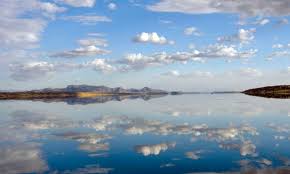WASHINGTON: A progressively drying climate punctuated by variable wetter episodes may have caused the transition from our hominin ancestors to anatomically modern humans, according to a study.
Since the discovery of a rich assemblage of human fossils as well as stone tools in the rift valley of East Africa, a region often referred to as the cradle of humanity, scientists have attempted to piece together the complex puzzle about the history of our human origins.
Published in the journal PNAS, the study based on lake sediment cores is the first to provide a continuous environmental context for the diverse archeological evidence recovered from nearby localities in the rift valley basins of southern Kenya.
The cores were sampled from Lake Magadi, a shallow, periodically dry lake, close to the Olorgesailie basin in Kenya, one of the most productive sites for archaeological evidence of human evolution in Africa, said Andrew Cohen, a professor at the University of Arizona in the US.
The researchers suggest that the profound climatic changes may have been driving forces behind hominin evolution, the origins of modern Homo sapiens and the onset of the Middle Stone Age.
While previous hypotheses have related hominin evolution to climate change, most prior studies lack regional-scale evidence for a link between environment and hominin evolution, the researchers said.
According to the study, a trend towards intense aridification in the area began 575,000 years ago.
The change, not previously documented in continuous continental cores from East Africa, corresponds with faunal extinctions and a major transformation in stone tool technology documented in the Olorgesailie region.
“Much evidence for human evolution has been gathered from the area, but linking those records to detailed environmental records was missing until now,” said Richard Owen from Hong Kong Baptist University.
“There is a big gap in the records between the last Early Stone Age tools 500,000 years ago and the appearance of Middle Stone Age in tools about 320,000 years ago. Our results plugged that gap with a continuous environmental record,” Owen said.
A critical transition occurred sometime during this gap, a period for which archeologists have unearthed evidence of a leap in early humans’ abilities to make, use and trade stone tools.
The cores from Lake Magadi provide the first detailed link between climate change and events known from the region’s archeological record.
“We have known for a while that the climate at the time was very varied, but the key here is that the records are in proximity to the archeological evidence for this transition,” said Andrew Cohen, a professor at the University of Arizona.
“The older stone tools found at Olorgesailie did not change much between 1.2 million and a half-million years ago. And suddenly, after 500,000 and before 320,000 years ago — we don’t know exactly when, but in that time-span — there was a critical transition in archeology when tools became more sophisticated and were transported over longer distances,” Cohen said.
At the same time the lake core records point to the climate becoming drier and more variable, there is evidence elsewhere in Africa of the appearance of modern Homo sapiens, prompting much speculation whether the two are connected, Cohen said. (AGENCIES)
Trending Now
E-Paper


